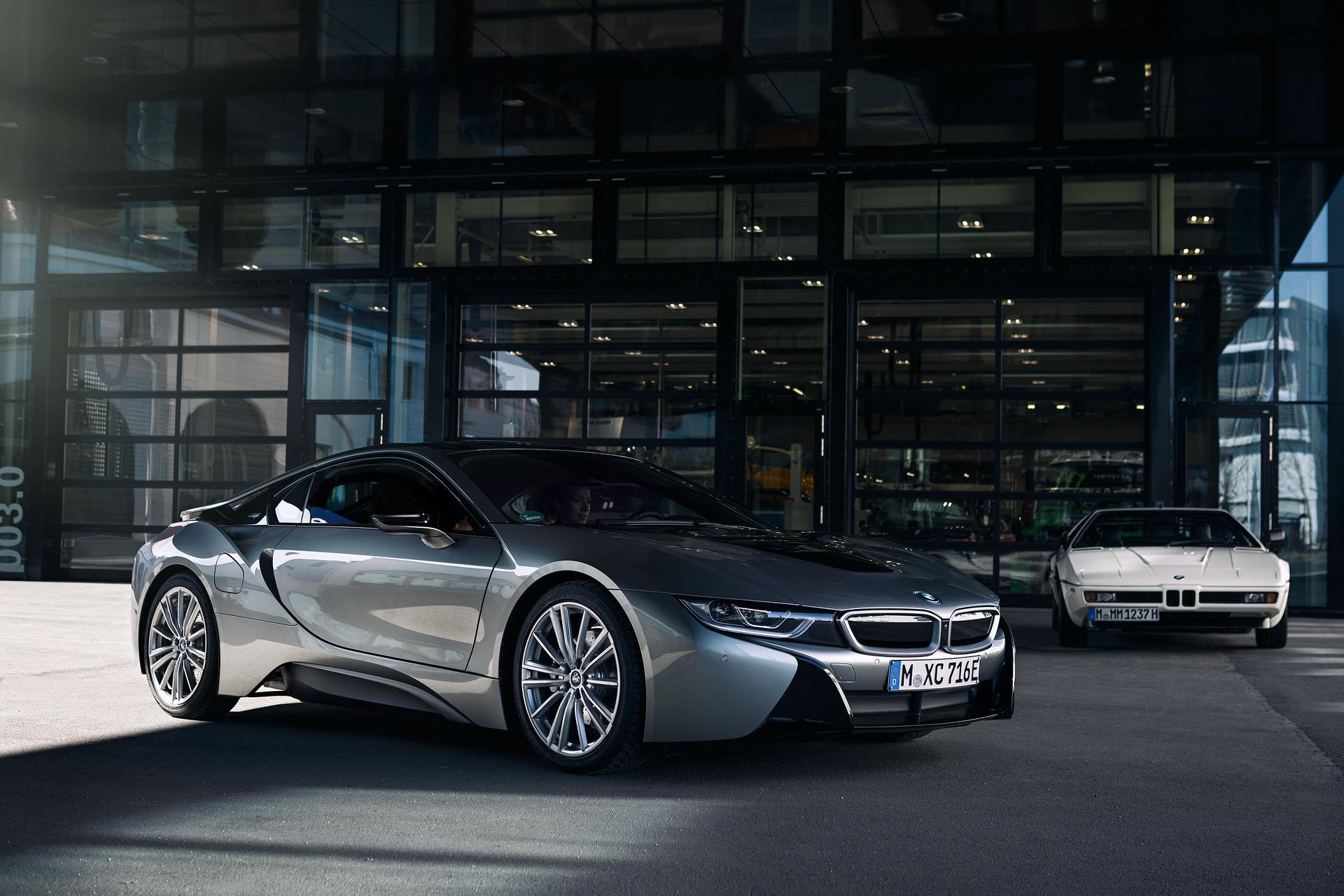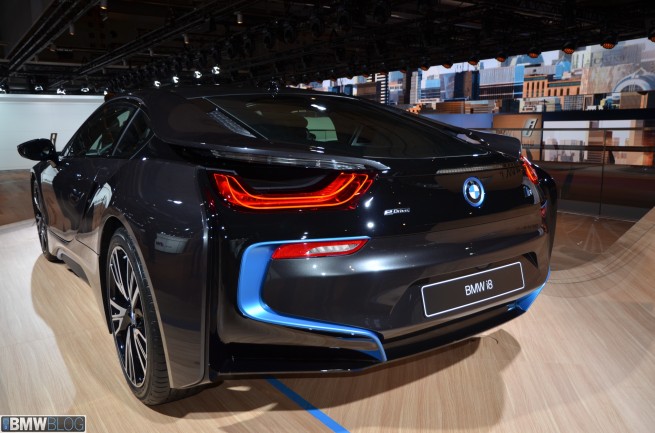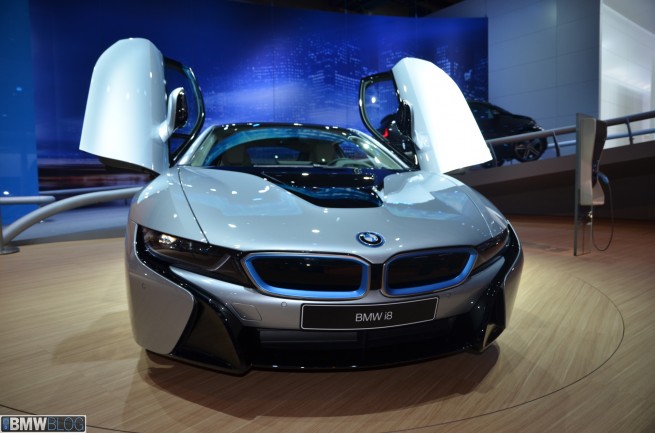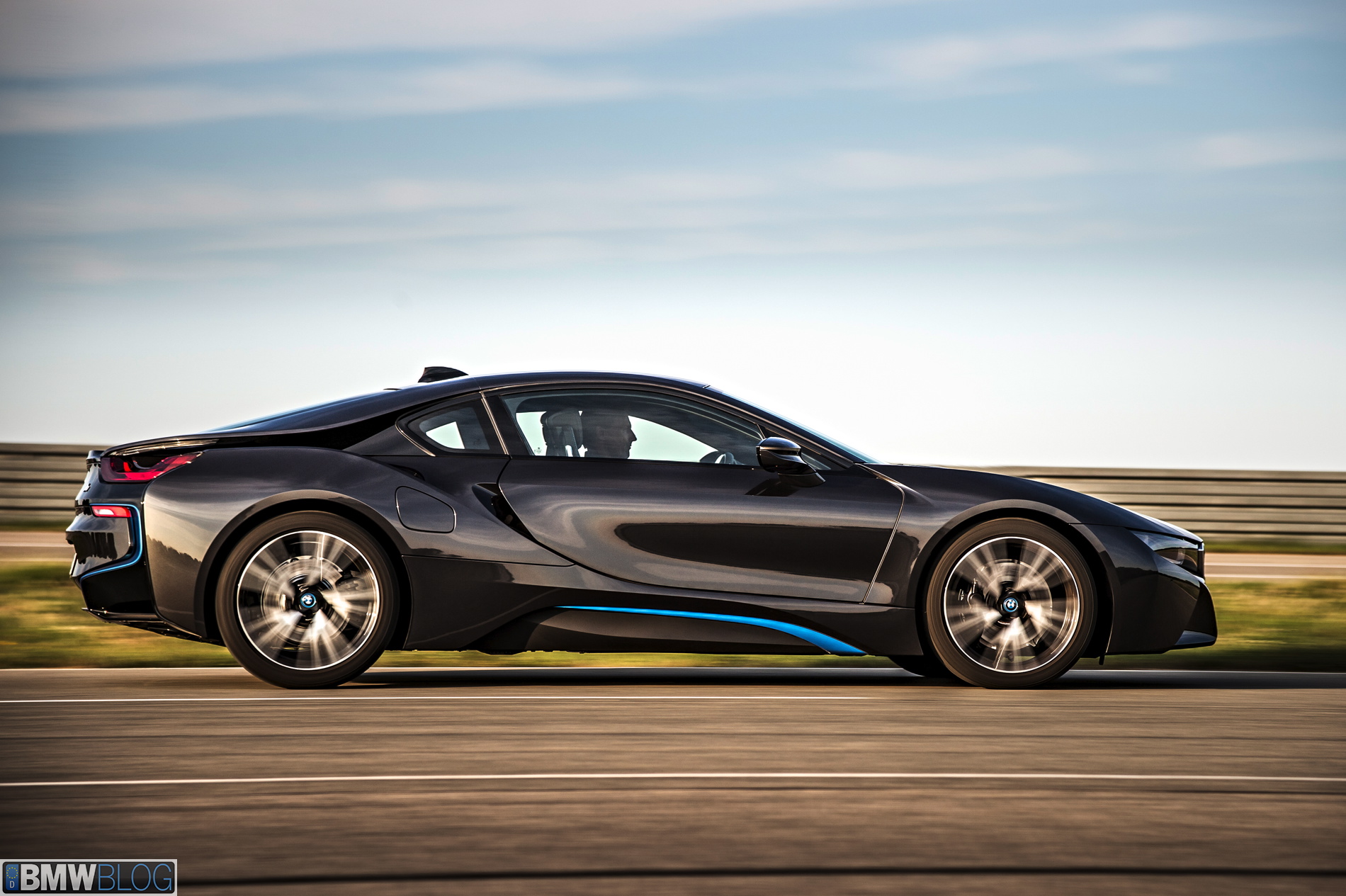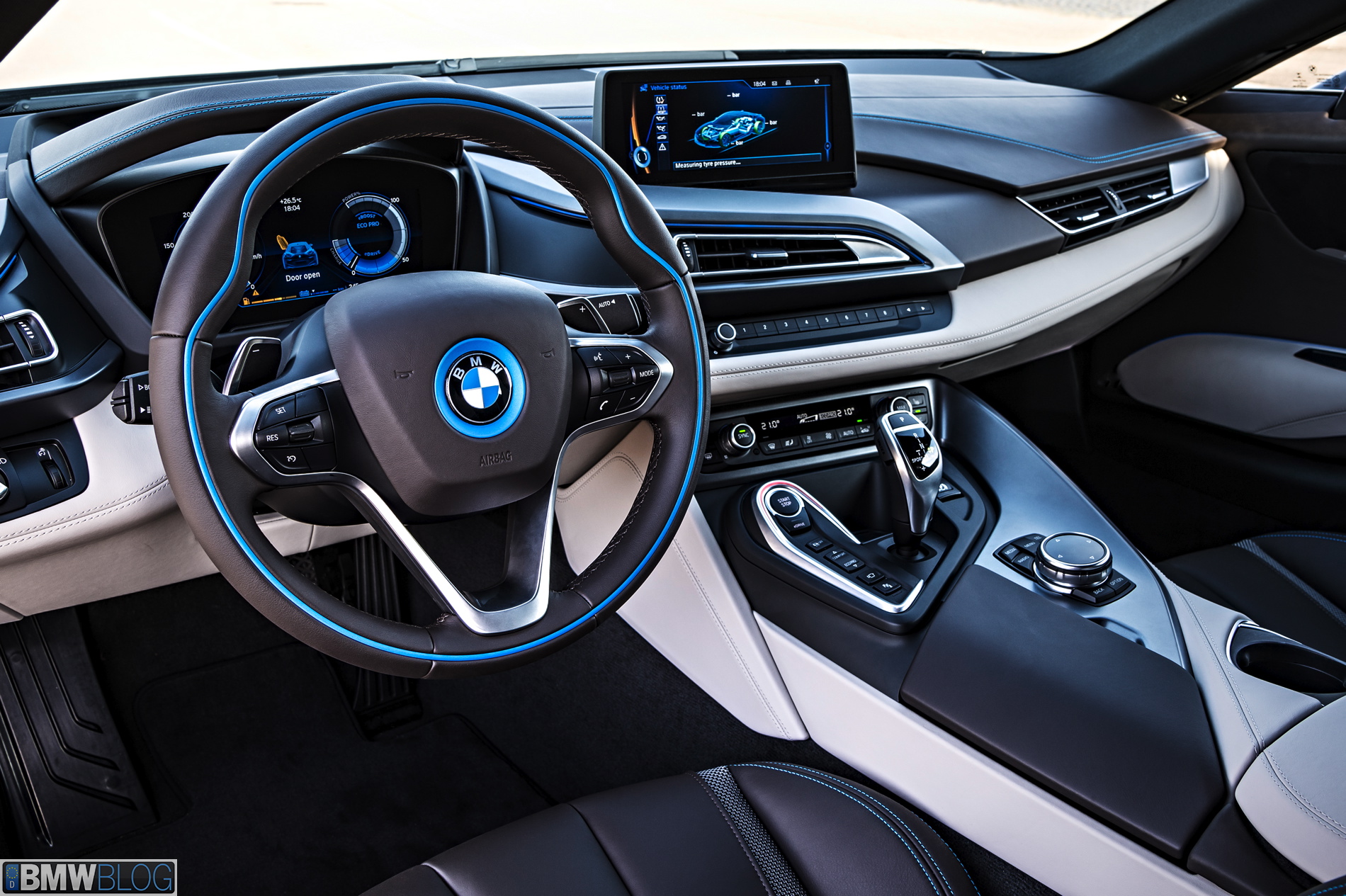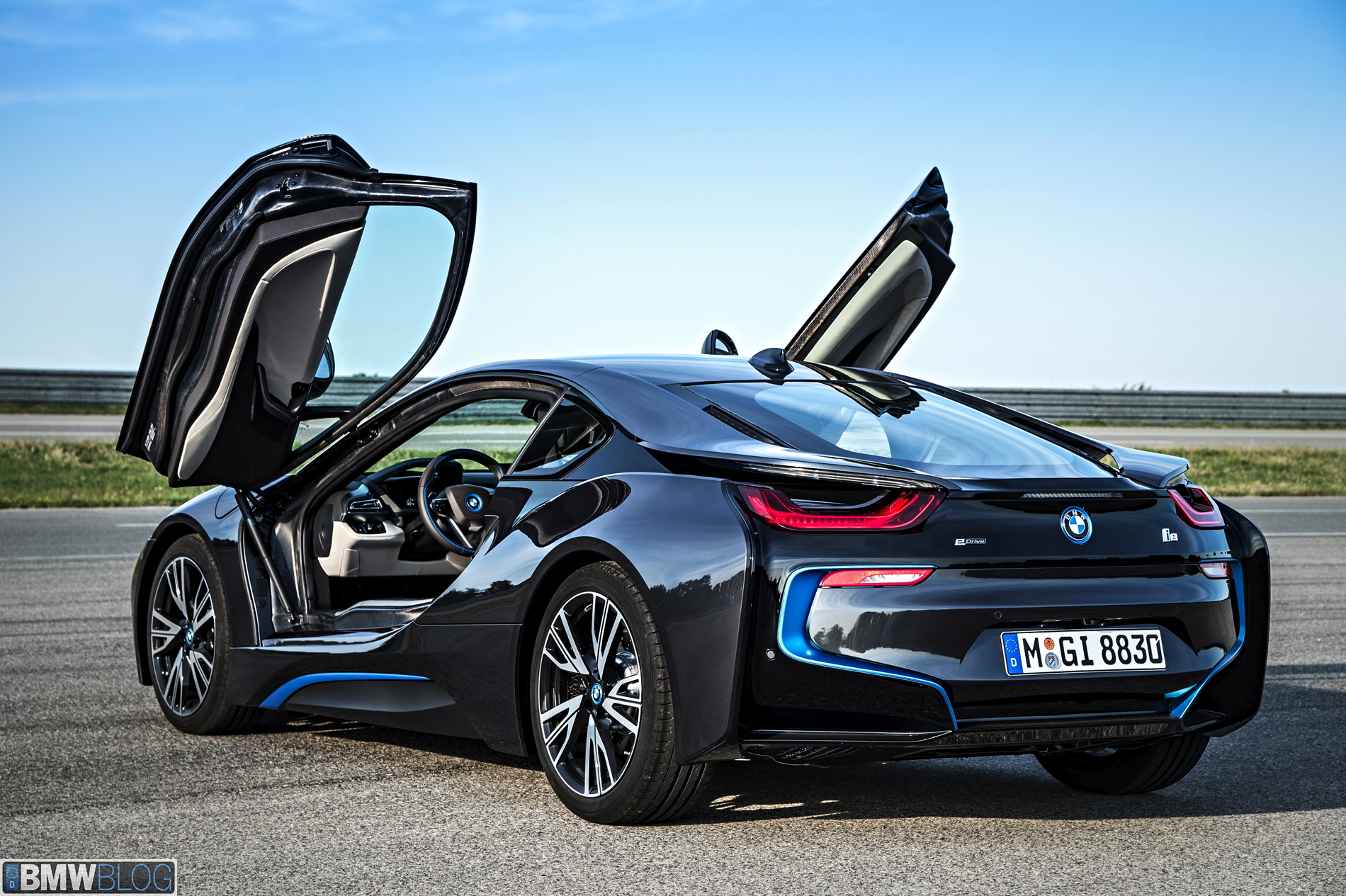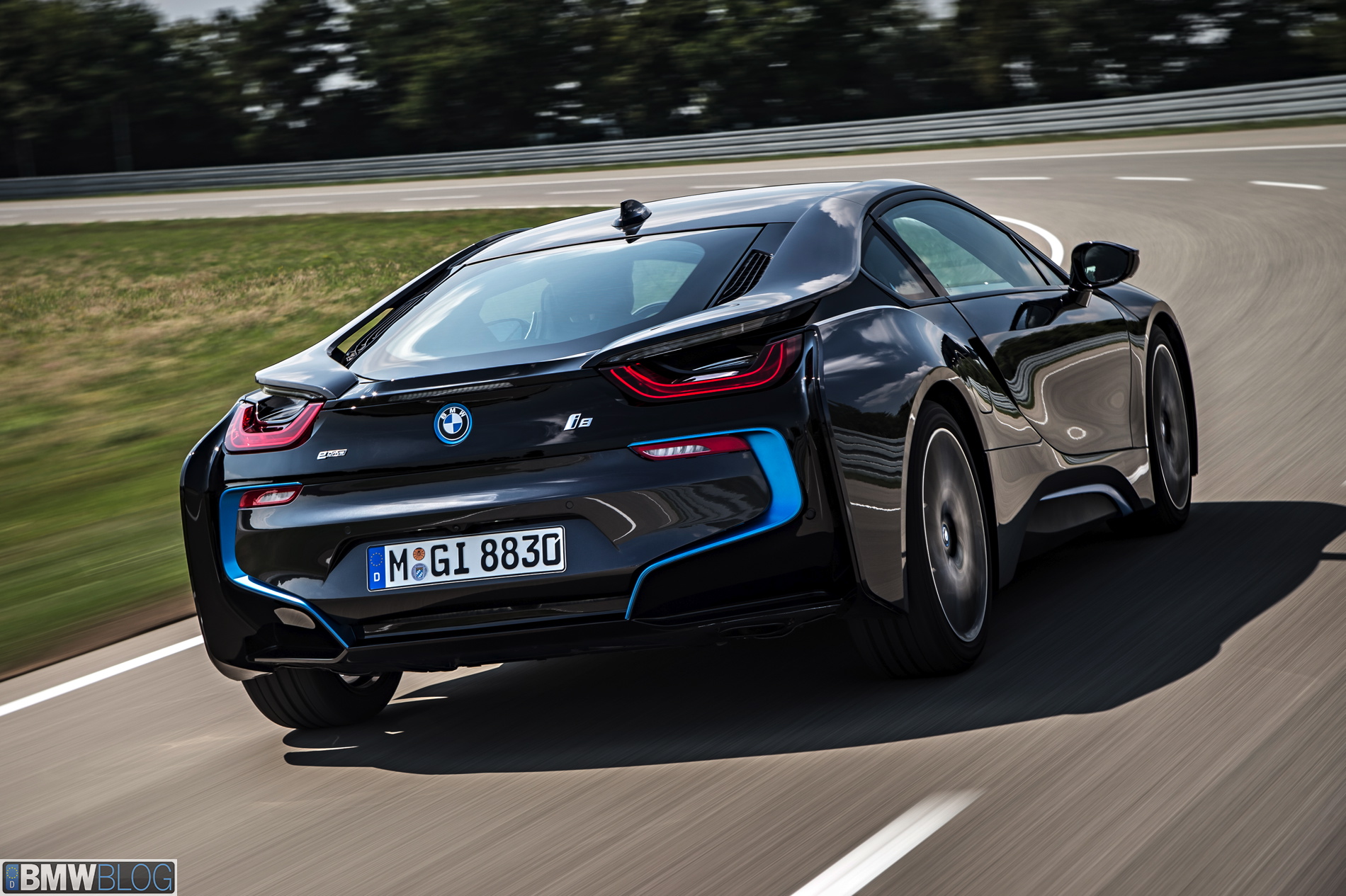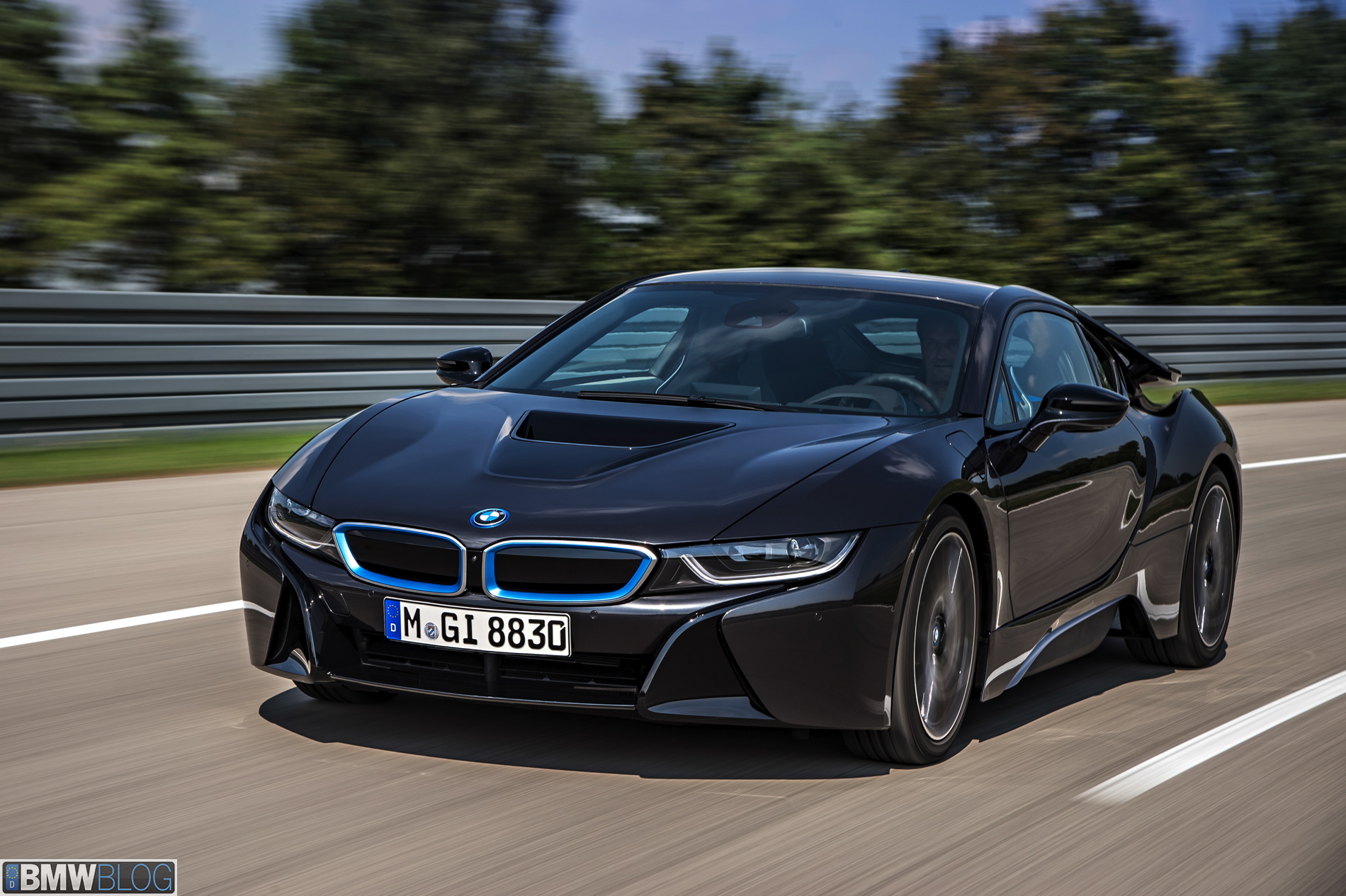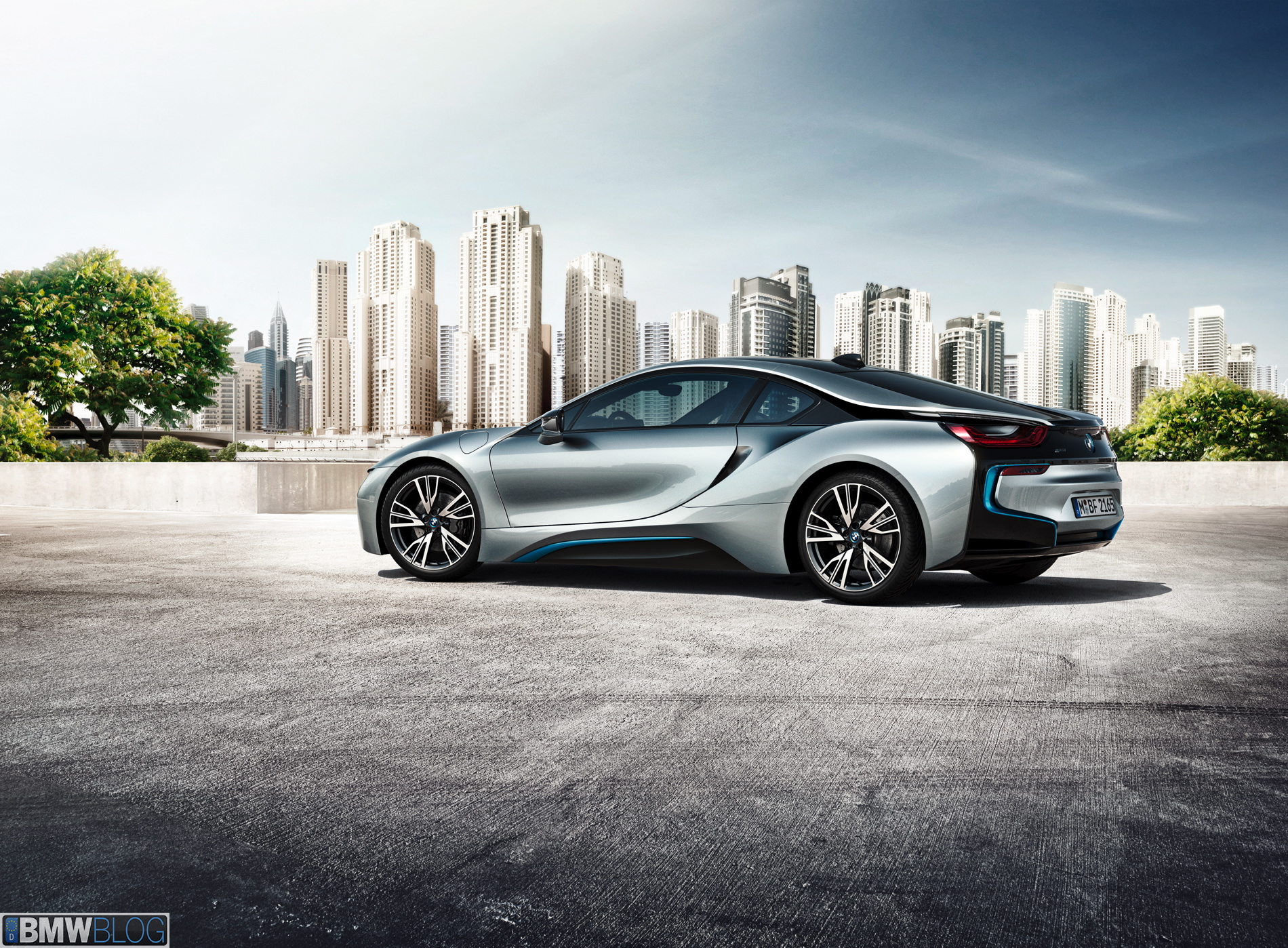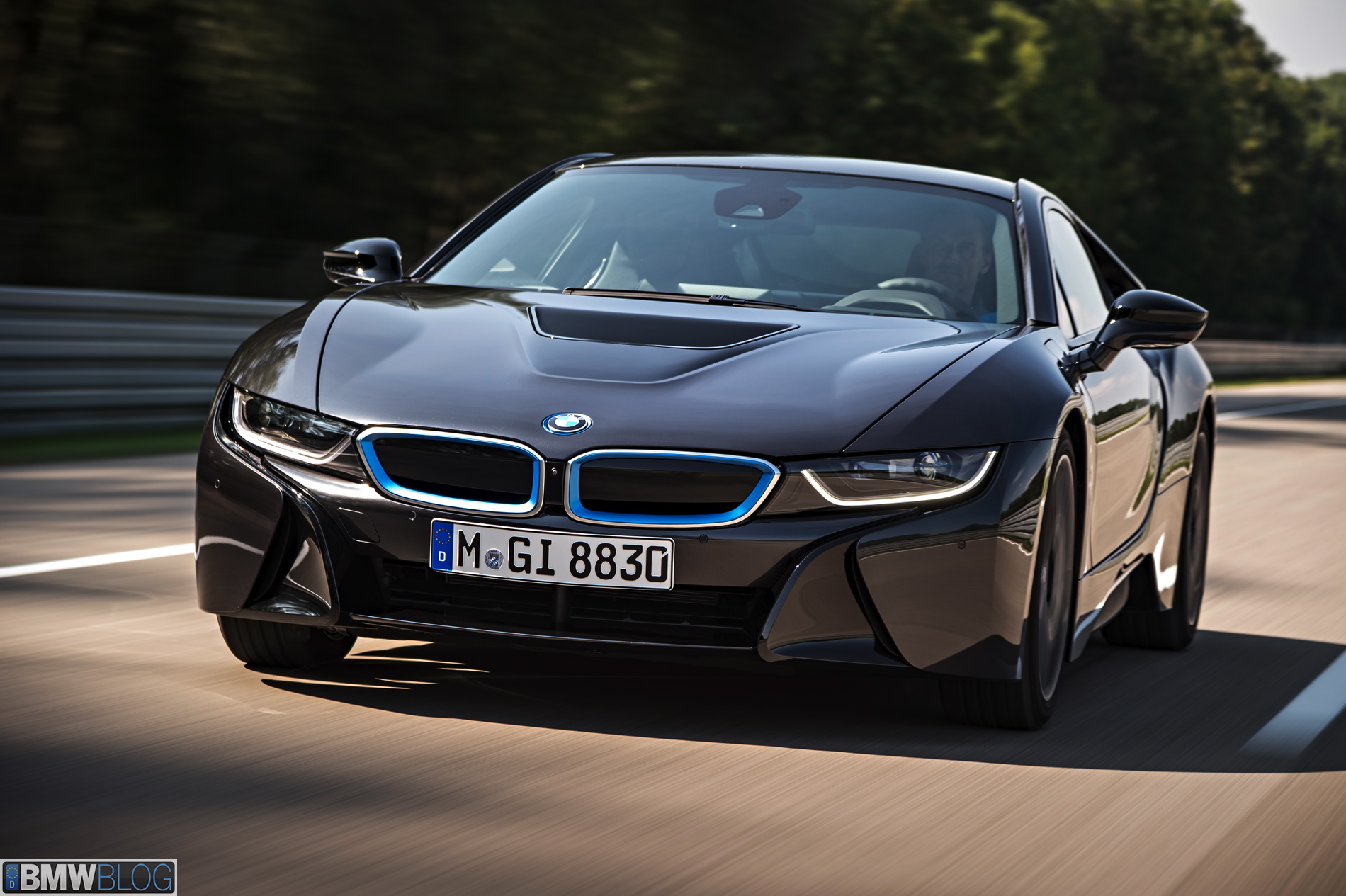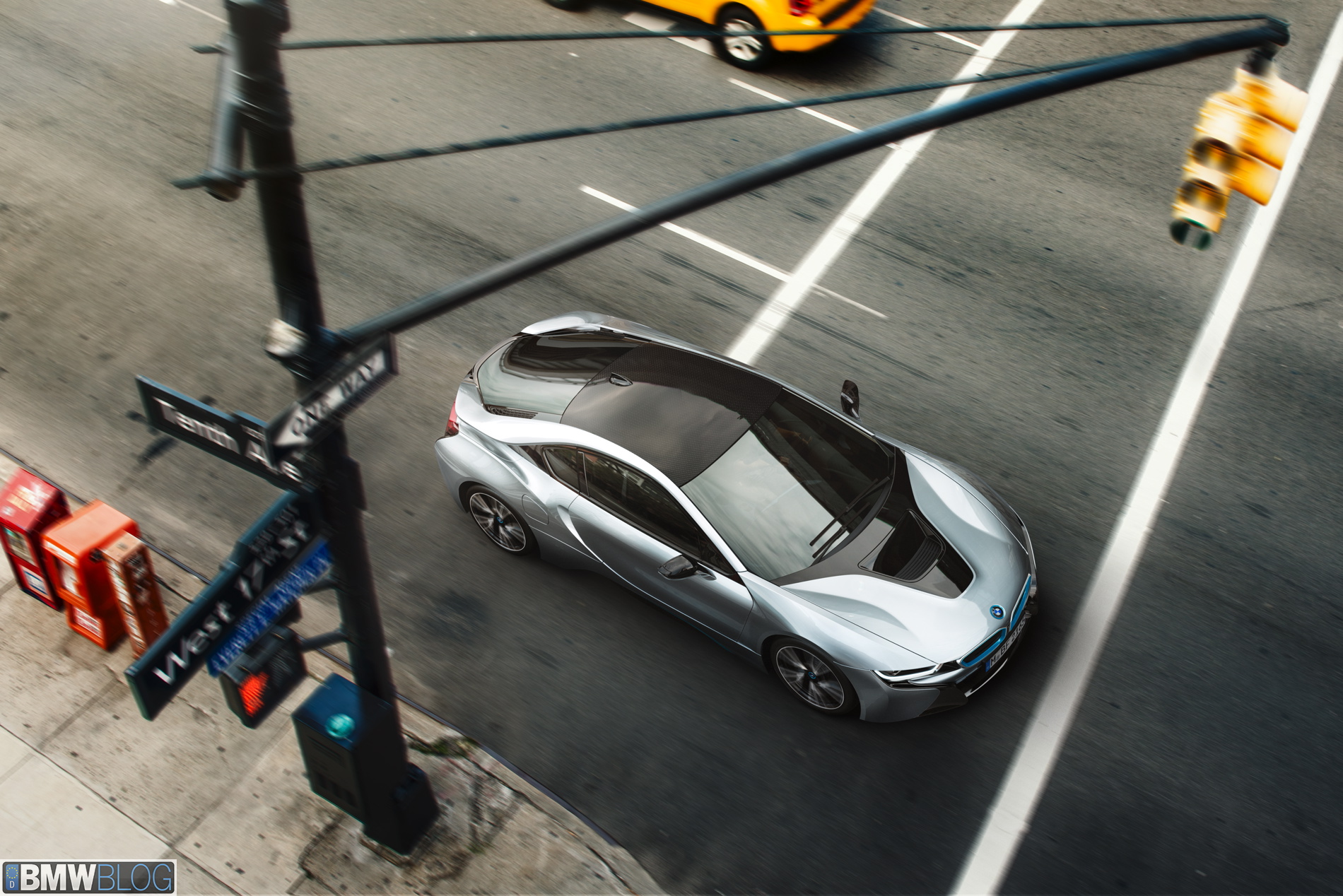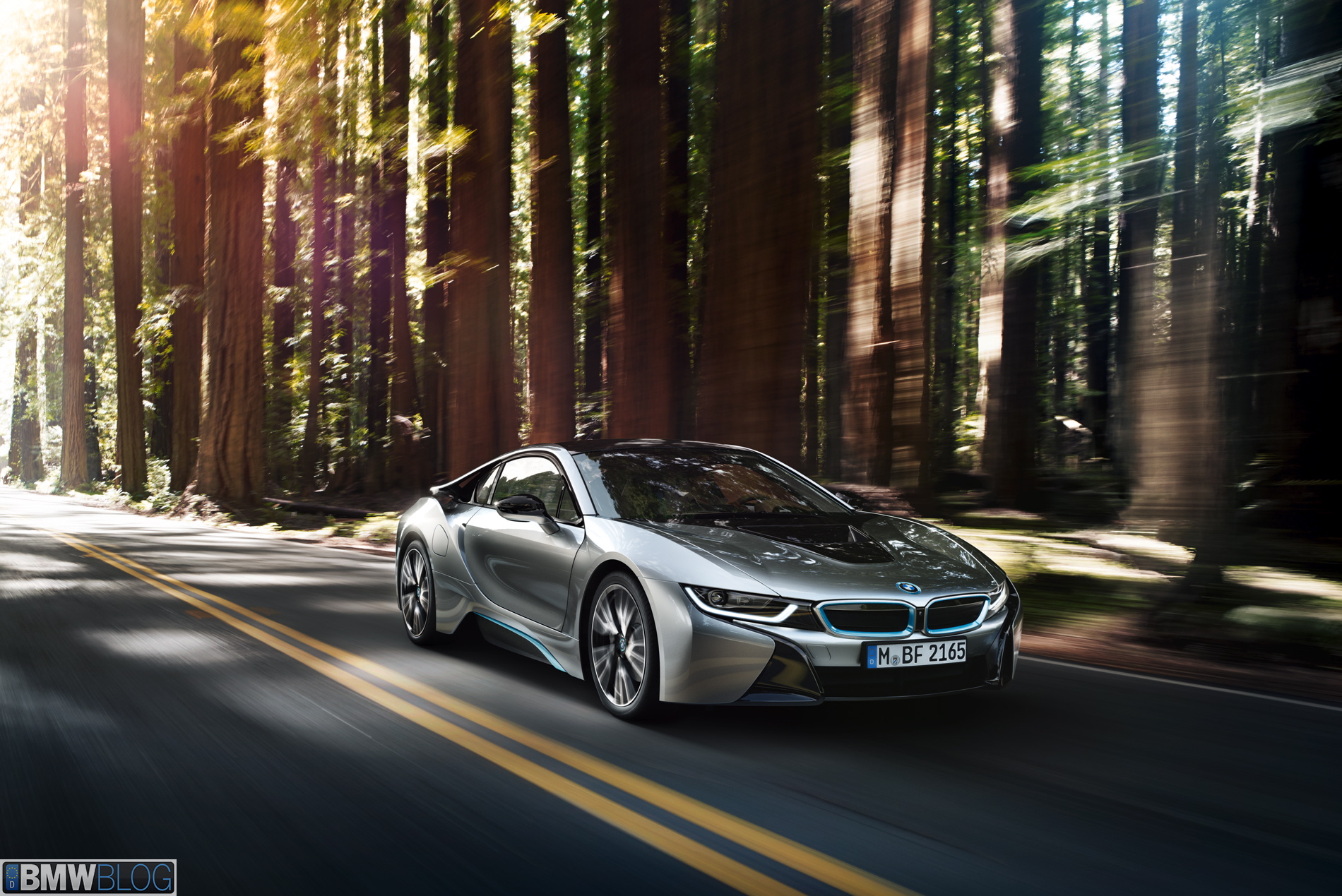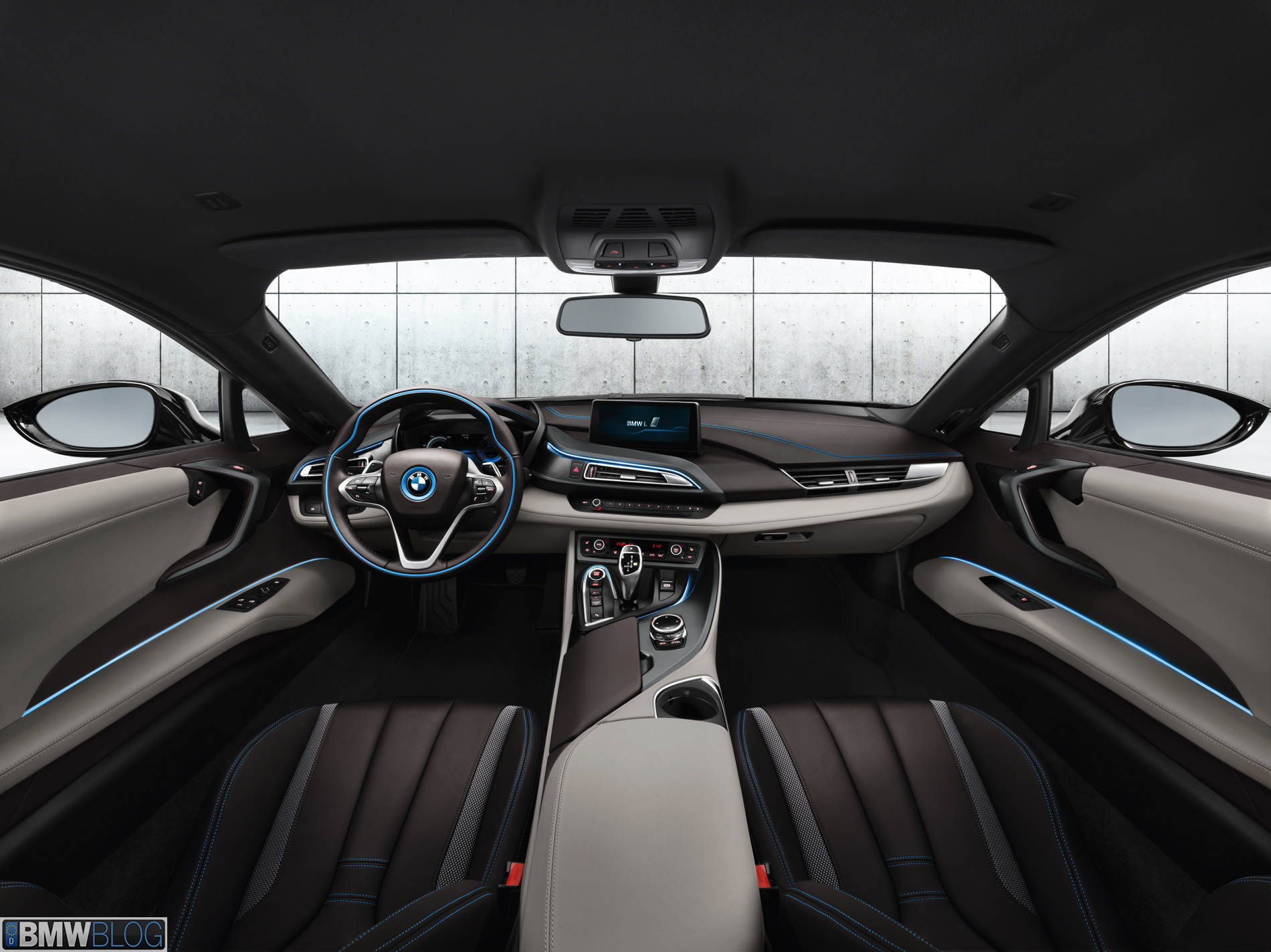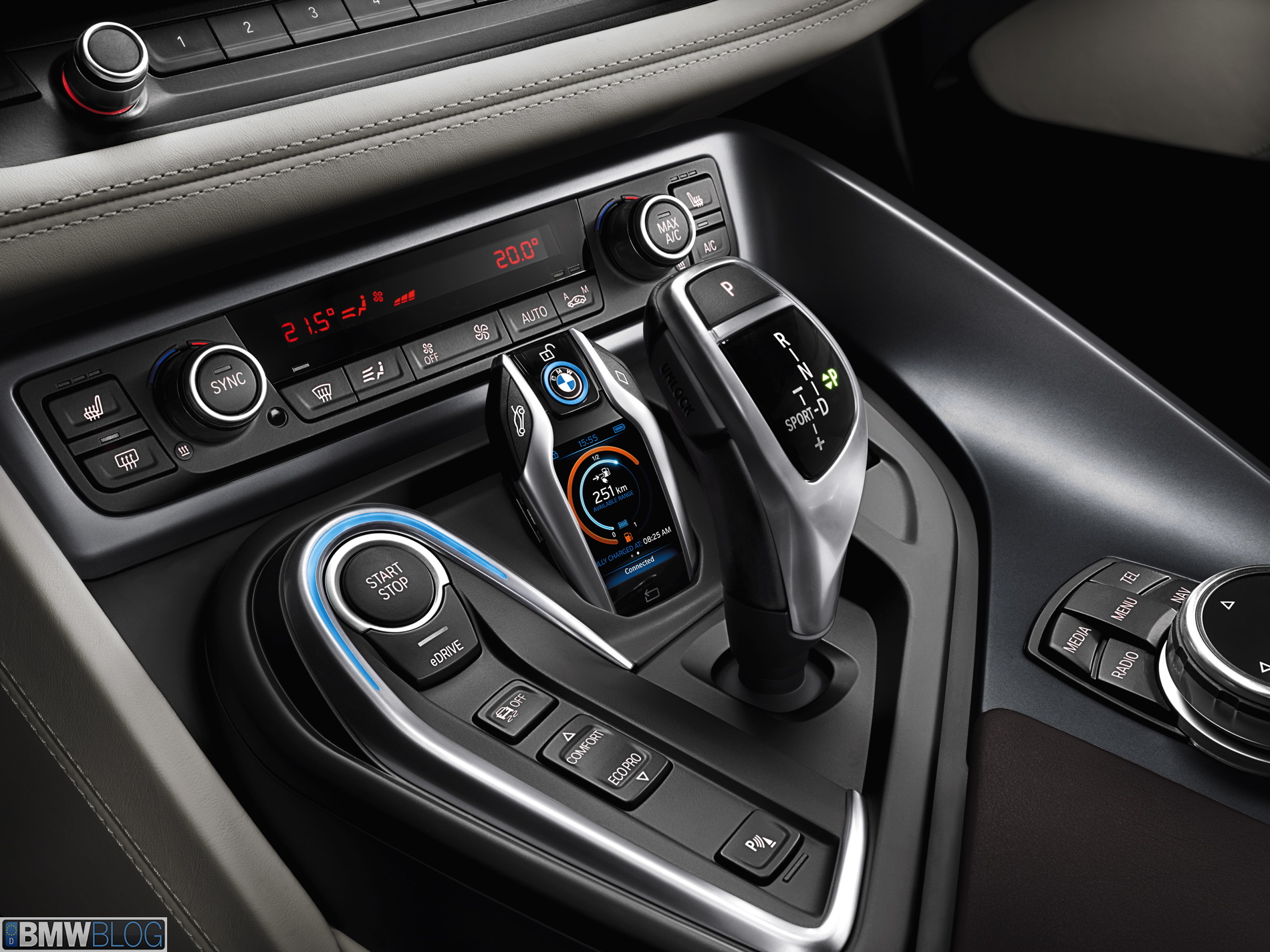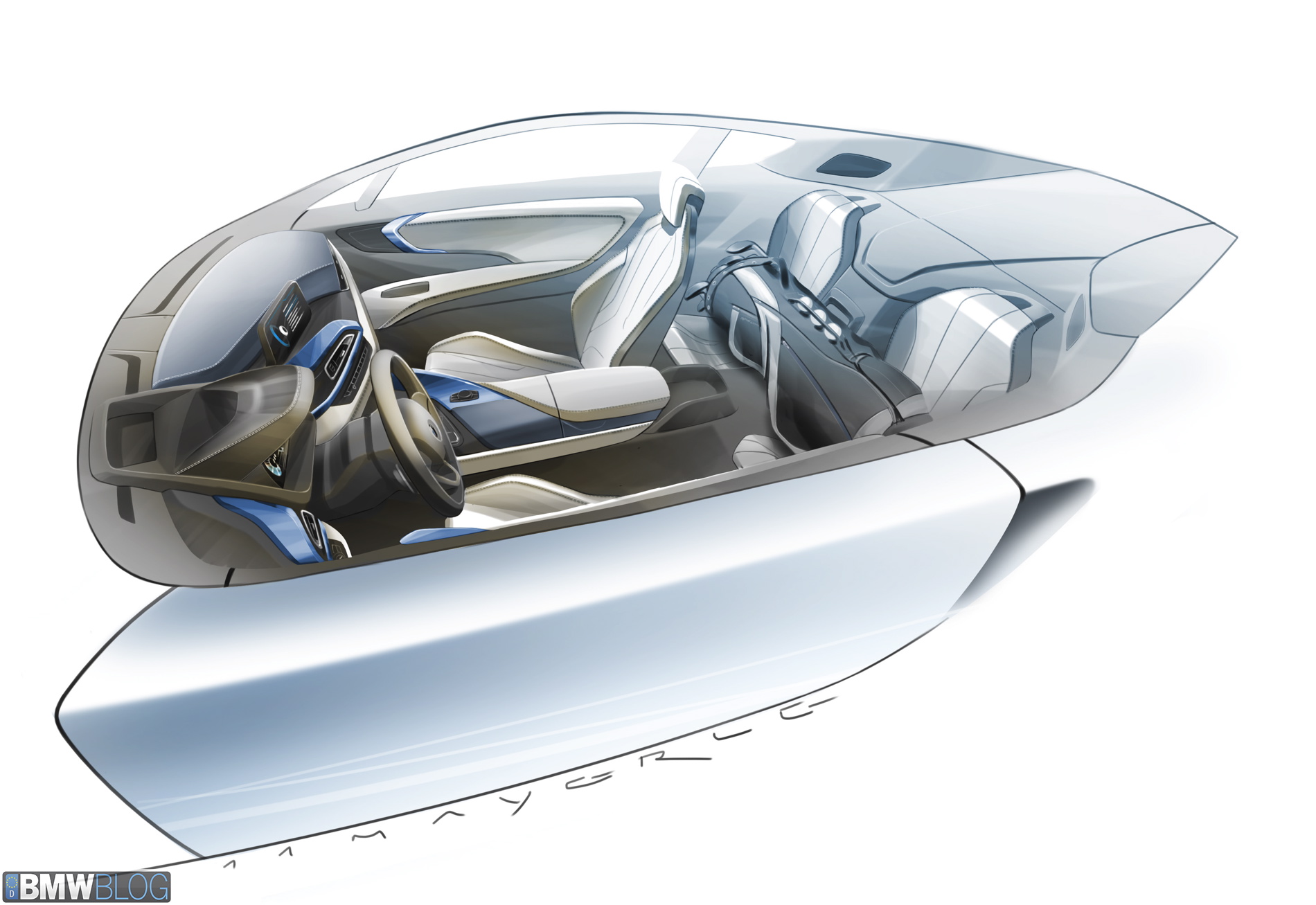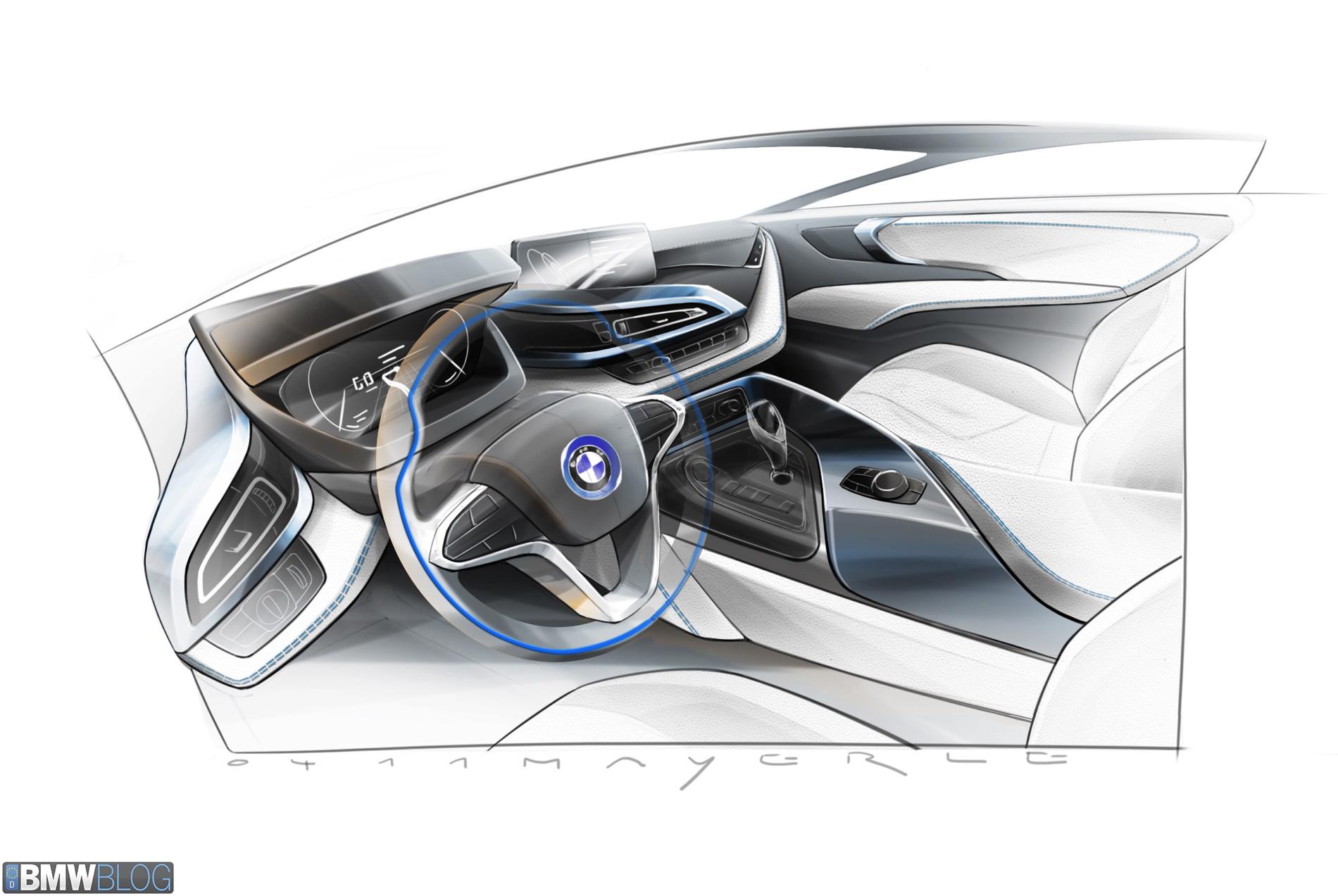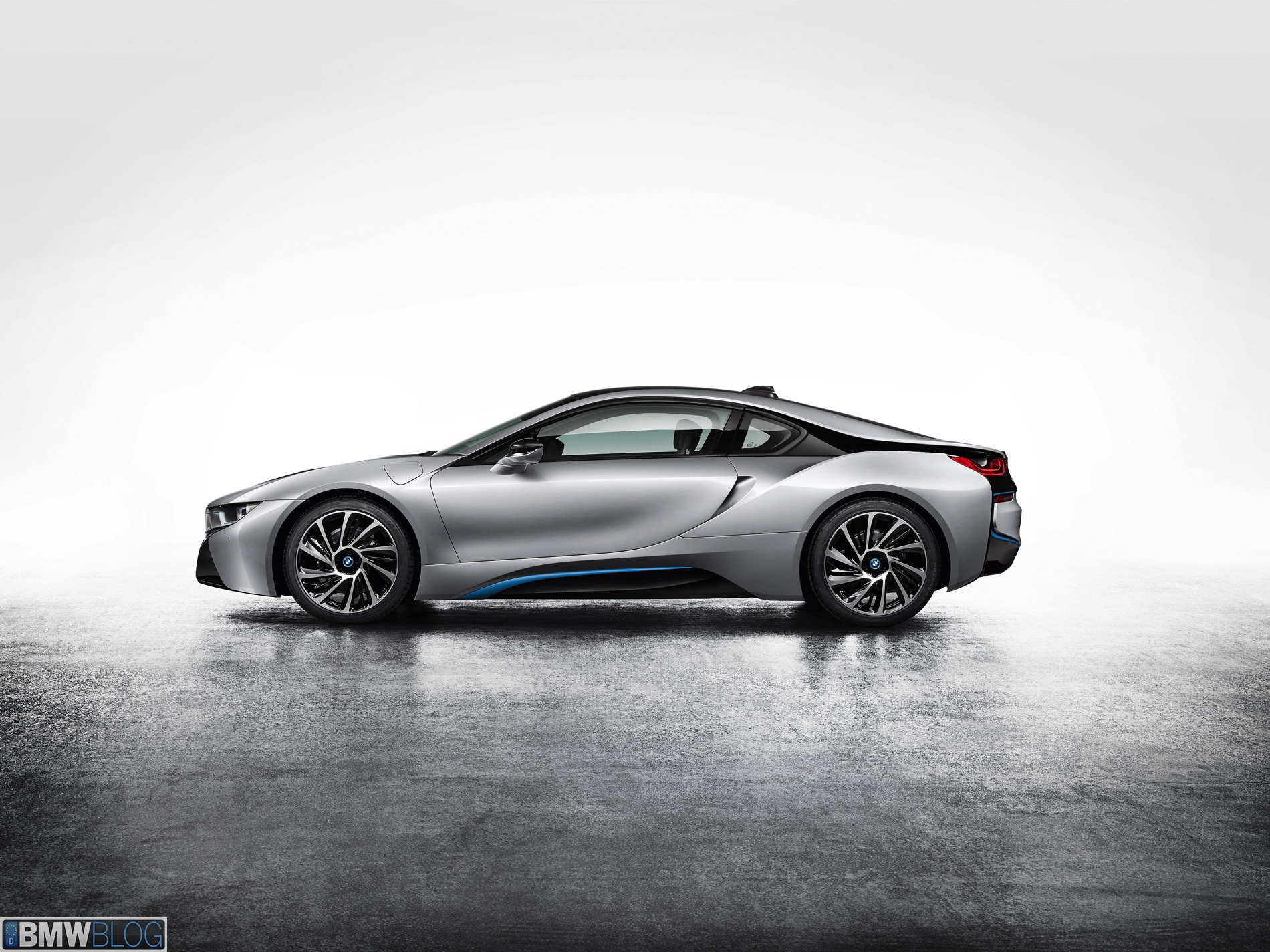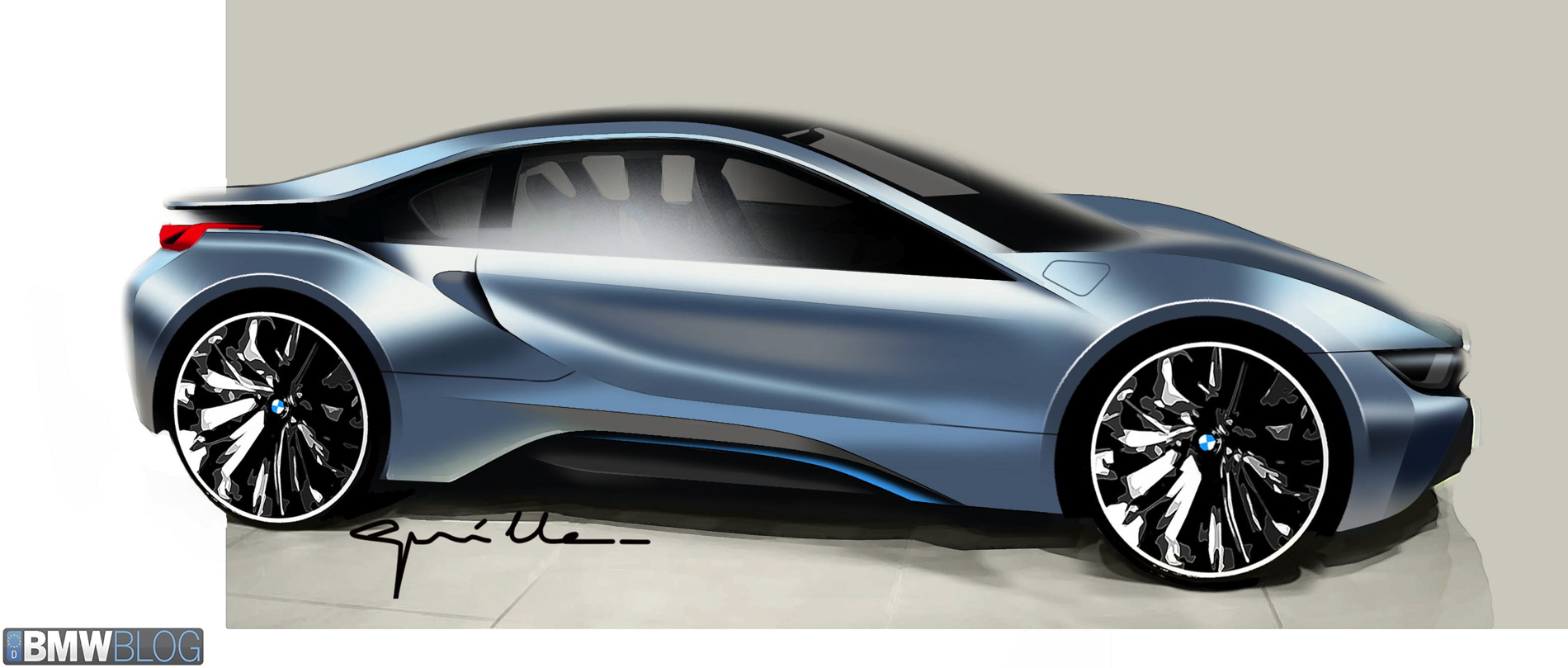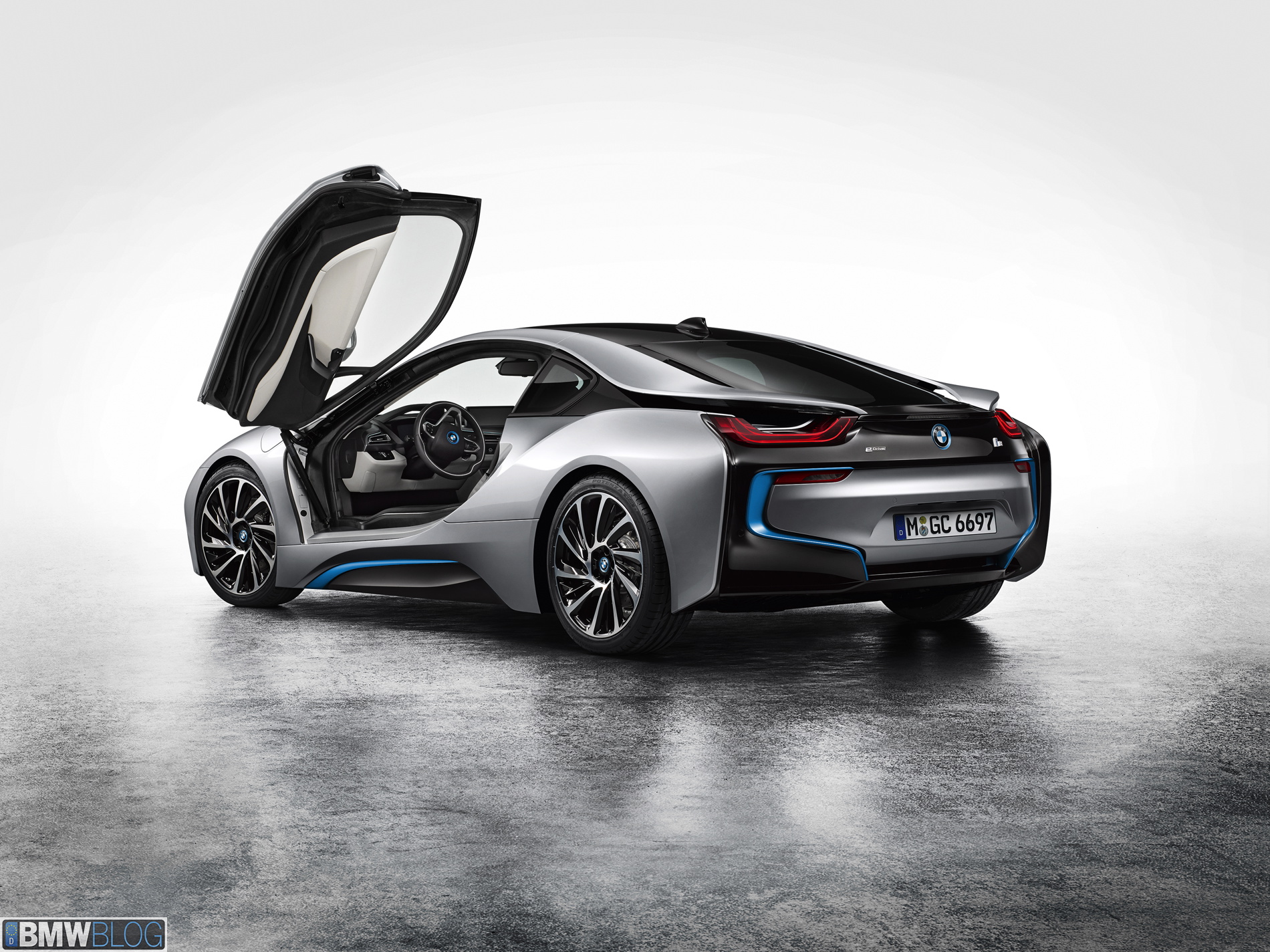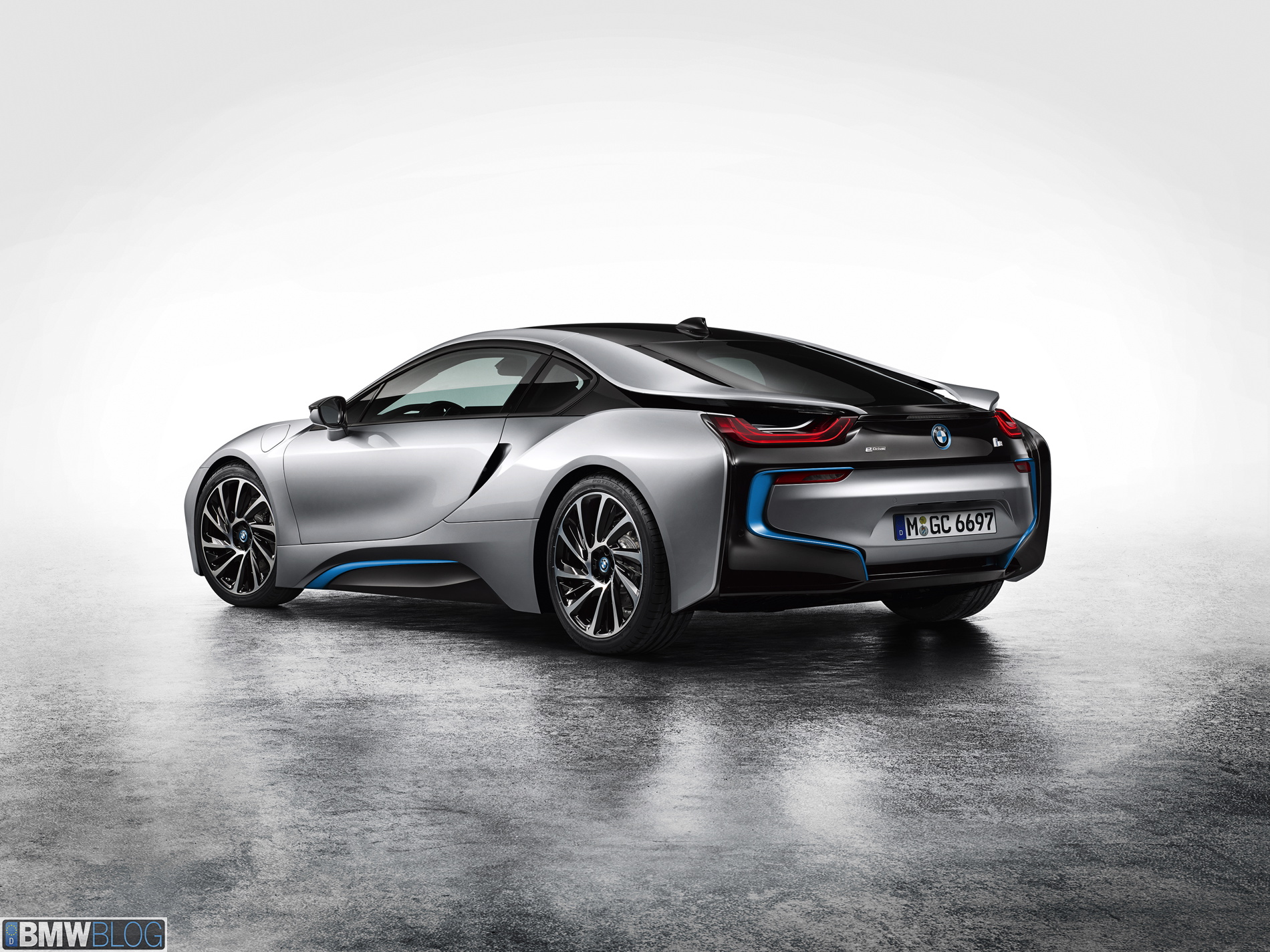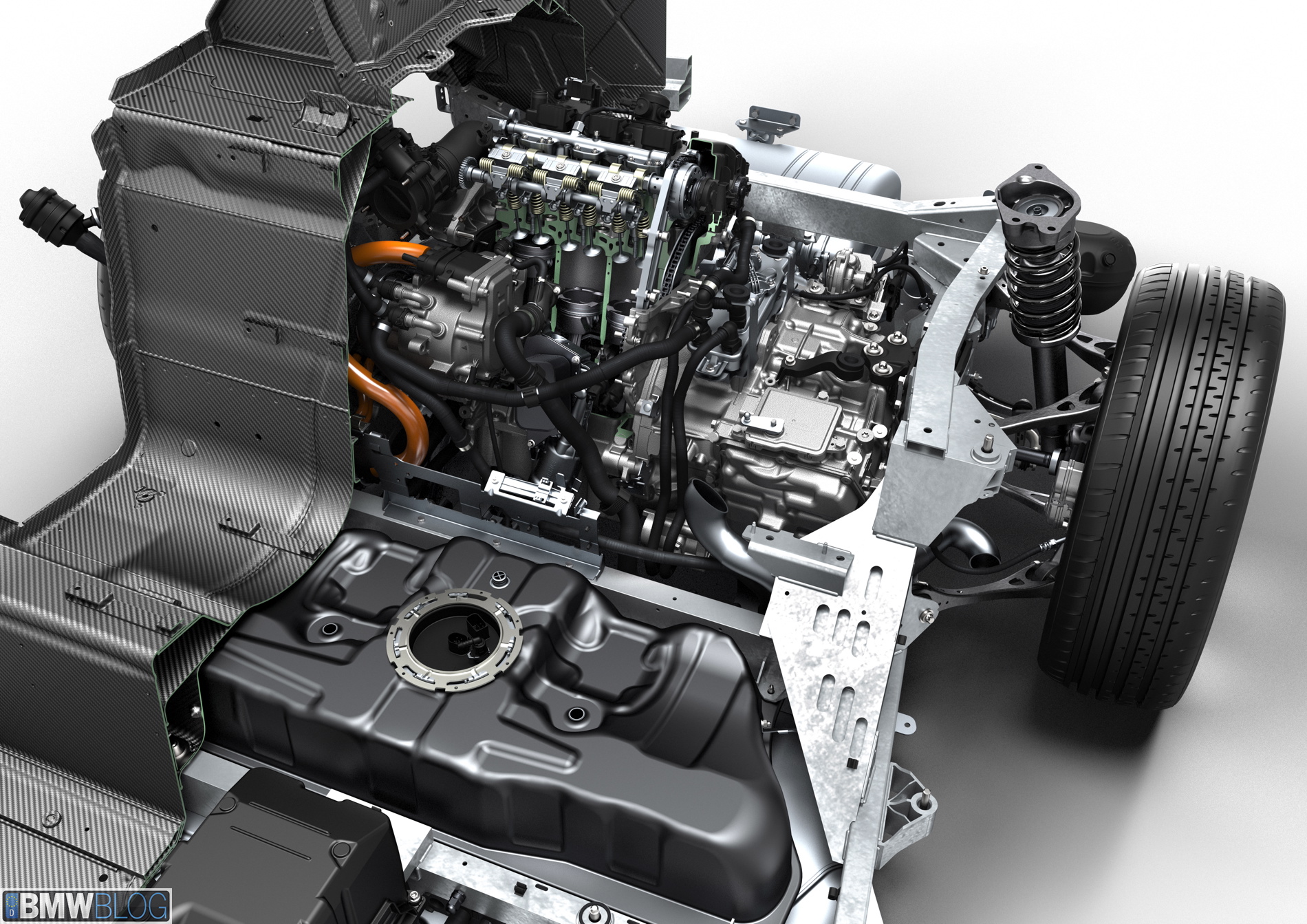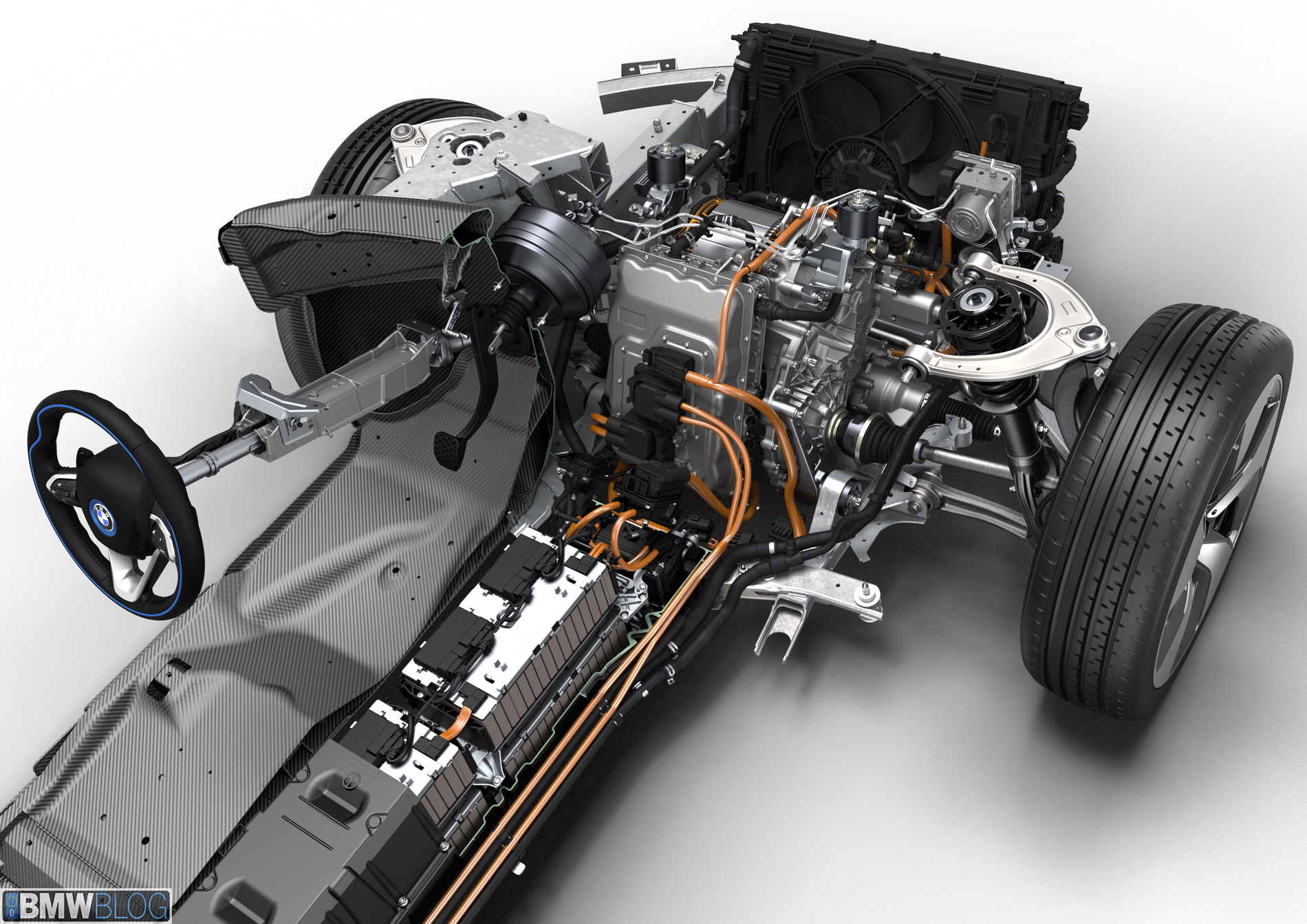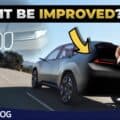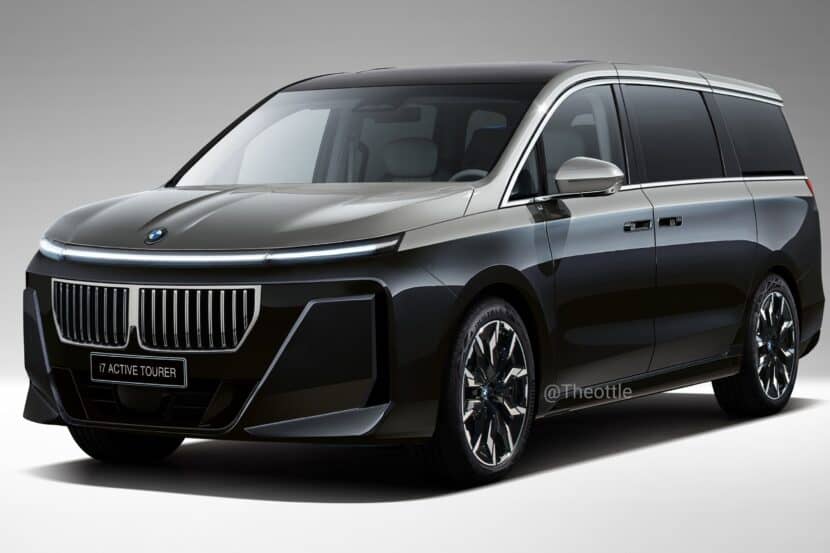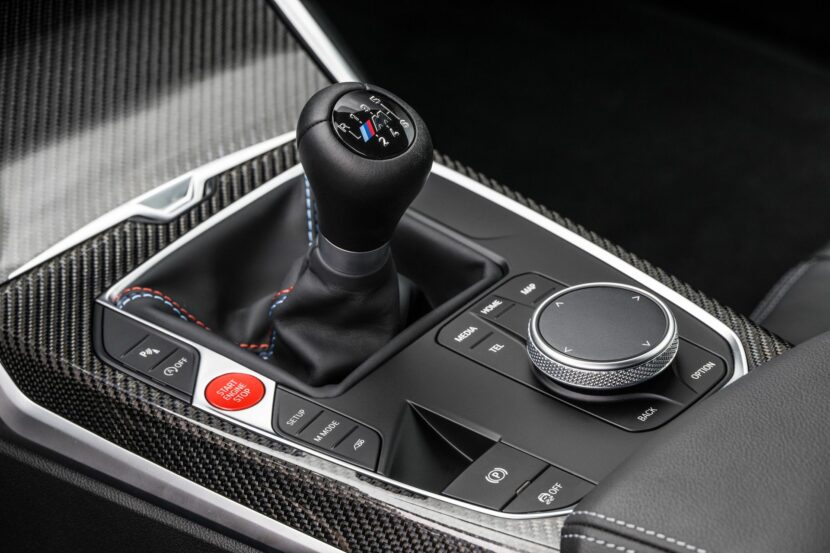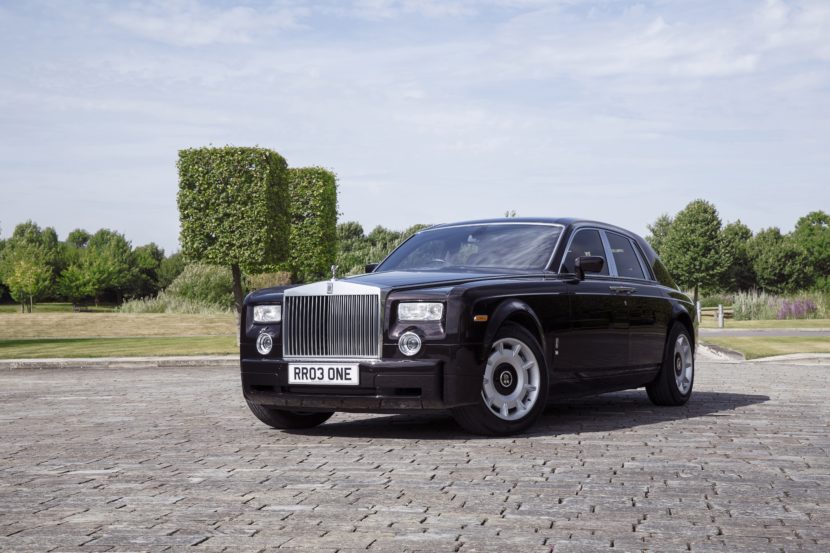As a street magician might say, “Using nothing but a 1.5 liter three cylinder gasoline engine, and an electric motor – that I happen to have laying around – I am going to go zero to sixty in 4.4 seconds.” And you’d say, yeah right, and be amazed when he pulled it off. And that’s what the BMW magicians (engineers) are saying to us when they show off their production ready i8 at the IAA in Frankfurt this September.
The three cylinder is a tweaked version of the engine that will soon propel MINIs and the FWD 1ers. The electric motor a massaged version of the motor BMW uses in the i3. Together they deliver approximately 362 hp, but a whopping combined 420 lb-ft of torque. Sounds like a big V8 diesel.
But that’s the odd thing – these two powerplants aren’t combined or connected. They power different axles, the electric motor the front and the gasoline engine the rear. What looks like a driveshaft tunnel running through the center of the car is actually the Li-ion battery pack, rated at 5 kWh – and while that sounds small, it is enough to propel the car 22 miles at speeds up to 75 MPH on the electric motor alone.
The i8 can literally be called a ‘bimotore’, two-motor, echoing images from the past like Ferrari’s 1935 Alfa Romeo Grand Prix car and all those crazy multi-motor drag racing cars built during the NHRA ‘fuel’ ban. The problem is how do you get decent handling – and more importantly how do you keep the two separated drivetrains in sync.
The answer is software. Lines and lines of code. The trick is to manage two disparate drivetrains by using information gleaned from multiple sensors, ABS, stability control, throttle, steering angle, drive mode switch, etc, and delivering the right amount of power to the correct wheel through the appropriate motor/gearbox.
The prototype i8 was publicly displayed in 2011 in Frankfurt. Since before that time the BMW engineers have been refining the software that manages this ultimately complicated drivetrain so that when the production version is in customers’ hands it won’t be version 1 revision 0 code in charge.
I won’t even attempt to define this as a practical car, and it won’t be the only car in the (swanky) garage of its wealthy owners – and it will be wealthy owners with an announced US pricing of just under $136,000 (before ticking off option boxes on the order form). With the motors occupying the front and rear ends of the car, the storage space is, inherently, the back seats.
This is a GT car – an epic inter-alpine express that delivers 94 MPG. But don’t try to calculate the payback time of the gas mileage versus the purchase price, this is not a Prius.
In thinking about the role of the i8 it becomes apparent that BMW intends this to be the face of the near future of sporting automobiles. But as importantly the i8, even at deliberately restrained production volume, will generate a lot of revenue for BMW. Maybe enough to justify the i3.
Regardless of how you view this car, BMW will have no problems selling it. It is a home run, and did you catch that bit that says it’ll do 0-60 in 4.4 seconds with nothing but a three cylinder engine and an electric motor? Very clever engineering from BMW, we wouldn’t expect less.
FOLLOW our entire BMW i8 coverage


